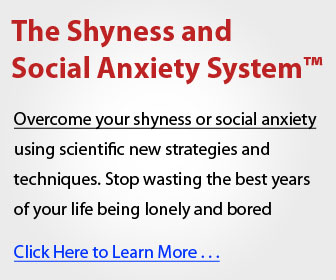Anxiety can feel like a storm inside your head—your thoughts race, your heart beats faster, and you start doubting yourself in every way. But what if you could use your own words to quiet the storm? That’s where positive self talk for anxiety becomes one of the most powerful, science-backed tools for mental peace and resilience.
Positive self talk is not about pretending everything is perfect. It’s about shifting your inner dialogue from fear and self-criticism to understanding and encouragement. When you learn how to speak kindly to yourself, you can rewire your brain to respond to stress differently, improve emotional balance, and gain a sense of control even in difficult moments.
In this article, you’ll discover how positive self talk for anxiety works, why it’s so effective, and how to make it a part of your daily routine.
What Is Positive Self Talk for Anxiety?
Positive self talk for anxiety means intentionally using supportive, realistic, and compassionate language when you face fear or uncertainty. Instead of telling yourself “I can’t handle this,” you begin saying, “I can take this one step at a time.”
It’s not about ignoring your feelings or forcing fake positivity. Rather, it’s about changing the tone of your inner voice so that it helps you rather than harms you.
Research in cognitive-behavioral therapy (CBT) shows that our thoughts shape our emotions and behaviors. By changing the way we talk to ourselves, we change how we feel and act. Over time, positive self talk for anxiety becomes a natural coping mechanism that lowers stress levels and boosts confidence.
Why Self Talk Matters in Anxiety Management
When anxiety strikes, your mind often becomes your worst enemy. It bombards you with “what ifs,” doubts, and self-criticism. But when you replace those patterns with compassionate, empowering thoughts, everything changes.
Here’s why it works:
- Reframes Negative Thinking – Positive self talk interrupts the loop of catastrophic thoughts and replaces them with balanced, realistic statements.
- Activates the Relaxation Response – Calm, reassuring words can signal safety to your brain, reducing cortisol and helping your body relax.
- Improves Emotional Resilience – People who use positive self talk for anxiety recover faster from stressful events and feel more in control.
- Builds Confidence and Self-Esteem – When you consistently affirm your strengths and abilities, your brain starts to believe them.
Common Negative Self Talk Patterns in Anxiety
Before you can change your self talk, you need to recognize what’s holding you back. Common examples include:
- Catastrophizing: “If I make a mistake, everyone will think I’m a failure.”
- Mind Reading: “They didn’t text back, they must be mad at me.”
- All-or-Nothing Thinking: “If I can’t do it perfectly, it’s not worth trying.”
- Overgeneralizing: “I always mess things up.”
These automatic thoughts reinforce anxiety and self-doubt. The goal of positive self talk for anxiety is to notice these patterns, challenge them, and replace them with words that reflect truth rather than fear.
How to Practice Positive Self Talk for Anxiety
Developing a kinder inner voice takes time and consistency. Here are practical ways to start:
1. Identify Your Triggers
Pay attention to moments when anxiety spikes. Is it during work meetings, social situations, or before making decisions? Knowing your triggers helps you prepare the right self talk responses.
2. Challenge Irrational Thoughts
When your mind says, “I can’t handle this,” ask yourself, “Is that really true? What evidence do I have that I’ve handled challenges before?” This reframing turns panic into perspective.
3. Create a List of Positive Affirmations
Write statements that you can repeat during stressful moments. Examples include:
- “I am safe and capable.”
- “This feeling will pass.”
- “I can take deep breaths and calm myself.”
- “I’ve managed tough situations before, and I can do it again.”
4. Use Visualization with Self Talk
Imagine yourself succeeding, staying calm, or handling anxiety with strength. As you visualize, repeat positive self talk phrases that reinforce the image. This strengthens both your belief and your emotional response.
5. Practice Daily Reflection
At the end of each day, notice the moments when you used supportive self talk and how it changed your reaction. Over time, this practice helps you internalize positivity.
The Science Behind Positive Self Talk for Anxiety
Neuroscientists have found that self talk activates regions of the brain involved in self-regulation and emotional control. When you use calming, compassionate words, you stimulate neural pathways that reduce amygdala activity—the part of the brain responsible for fear and anxiety.
Moreover, studies from Stanford and Harvard have shown that individuals who practice positive self talk experience lower stress hormones, improved focus, and even better immune function. This means your words literally influence your biology.
Examples of Positive Self Talk for Anxiety
Here are some examples you can use in everyday life:
- Before a presentation: “I’ve prepared well. I don’t have to be perfect, just authentic.”
- During a panic attack: “I’ve felt this before, and it always passes. My body is safe.”
- After making a mistake: “Everyone makes mistakes. I can learn from this.”
- When feeling overwhelmed: “One step at a time. I don’t have to do everything today.”
Each of these phrases acknowledges your emotions without letting anxiety control your behavior.
Turning Self Talk into a Lifestyle
Positive self talk for anxiety works best when it becomes part of your mindset, not just something you use in crisis. To make it a lifestyle:
- Surround yourself with positive influences—books, podcasts, and people who lift you up.
- Start your mornings with a kind inner dialogue: “Today, I choose calm and confidence.”
- Write encouraging notes on your mirror or phone background.
- Celebrate small wins and progress rather than perfection.
With consistency, your brain learns that self-compassion is your default setting.
When to Seek Professional Help
While positive self talk is powerful, it’s not a substitute for therapy or medical treatment when anxiety becomes overwhelming. If you experience persistent panic attacks, constant worry, or physical symptoms that interfere with daily life, consider speaking with a mental health professional. They can help you integrate techniques like CBT, mindfulness, and guided self talk tailored to your needs.
Final Thoughts
Your inner voice can be your biggest enemy or your greatest ally. By practicing positive self talk for anxiety, you train your mind to become a source of calm, courage, and clarity. Every time you choose kind words over fear-based ones, you’re taking a powerful step toward emotional freedom.
You don’t need to silence anxiety completely—you just need to speak to yourself in a way that reminds you you’re capable of handling it.
Because when your self talk changes, your whole life changes.



